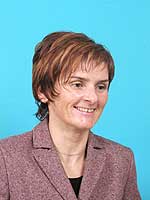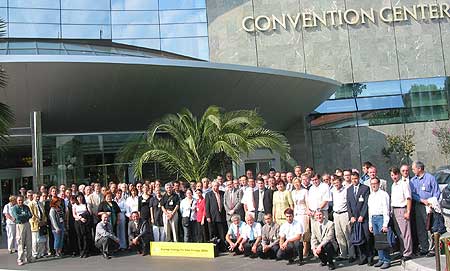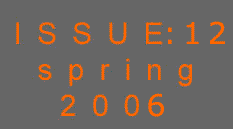
SLOVENIA: THE POSITIVE PRESENT AND FUTURE OF NUCLEAR
Letter from Milena Cernilogar Radež, ENS Board
Members and Member of the Nuclear Society of Slovenia -
NSS |
 |

|
In recent years, the Nuclear
Society of Slovenia (NSS) has carried out several activities
aimed at raising its profile by conveying messages about
the advantages of nuclear energy to the general public and
politicians. We believe that such frequently articulated
messages can gradually help to reduce the extent of anti-nuclear
feeling expressed by the public and young students. The
board of NSS has reviewed recent trends in Slovenian nuclear
energy policy and has promoted further action by inviting
all the members of the society, especially the younger generation
of members to take part in the activities of NSS. NSS |
increasingly organizes conferences, workshops,
exhibitions, and communication campaigns aimed at the public,
which present positive reports on the future role of nuclear energy.
Finally, Slovenian policy-makers have already started creating
the favourable conditions that Slovenia needs to meet its economic,
energy and environmental objectives – by keeping nuclear
as one of the central options in their energy policy and by encouraging
increased education about nuclear energy.
In September 1996, the Slovenian Government
adopted its Strategy for Long-Term Spent Fuel Management,
with ongoing revision of the strategy carried out by the national
Agency for Radwaste. Furthermore, activities related to choice
of site and conceptual design of the low and intermediate level
waste disposal have been given top priority by the government.
IN the last two years, substantial progress has been made towards
the selection of a location for the final disposal of low and
intermediate radioactive waste. The government, with the full
support of members of parliament, recently adopted a national
programme for the management with radioactive waste and spent
fuel for the period from 2006 to 2015.
Slovenia has one operating nuclear power plant
that contributes about 40% of the country’s electricity
production, a research reactor, an interim central radioactive
waste storage unit for low and intermediate level solid radioactive
waste from non-power users of nuclear energy. Slovenia also has
one uranium mine and mill that is currently being decommissioned.
The government’s energy policy is outlined
in the National Energy Programme, which also addresses nuclear
power. The main principles that underpin this programme are sustainability,
ecological acceptability and security of energy supply.

The resolution on the National Energy programme
was adopted by the Slovenian Parliament in 2004. In this document
the following main policy decision was made: the Krško NPP
will remain in operation until at least 2023. In order to ensure
its continued safe and reliable operation, adequate steps will
be taken and the decision on the life extension of the Krško
NPP will be made in 2012. This decision will be based on an evaluation
programme that will start in 2008.
The Krško Nuclear Power Plant, which is
situated in the south eastern part of Slovenia, is a Westinghouse
two-loop pressurized water reactor with originally installed capacity
of 632 MWe. After the steam generator was replaced the power was
up-rated to 676 MWe. In 2006, the low pressure turbine will be
replaced and the power will be up-rated again providing an additional
23 MWe. The construction of the Krško NPP started in 1974.
On the basis of a special permit, the first fuel loading took
place in May 1981 and the plant was connected to the grid in October
of the same year. After an authorised trial operation, full power
was reached in August 1982, and the first full year of commercial
operation was 1983.
Solid radioactive waste and spent nuclear fuel
are stored at the plant. A major project that took place in 2003
was the expansion of the capacity of the spent fuel pit, which
has now enough capacity to store spent fuel until 2023 (with the
possibility of further expansion of capacity in the future). Solid
radioactive waste is treated and then packed into steel drums,
which are then stored in the Solid Waste Storage unit at the plant.
The safety features of the Krško NPP’s design are based
on the requirements of the US Atomic Energy Commission of 1973.
Westinghouse, as the main contractor, was responsible for the
implementation of these requirements during the design phase,
construction and testing.
The Krško NPP has been the subject of IAEA
supervision since the very beginning of the project. The commitment
made by the plant operator and the regulatory body (the Slovenian
Nuclear Safety Administration), advised by a number of technical
support organisations, was to learn from international experiences
and expertise in the field of nuclear safety and to fulfil strict
western safety standards.
The research reactor TRIGA Mark II, at the Jožef
Stefan Institute, is situated in the vicinity of Ljubljana and
has a 250 kWth General Atomic pool reactor. TRIGA was initially
licensed in 1966 as an IAEA project and was re-licensed for steady
state and pulse operation after refurbishment and reconstruction,
in 1992.
The Žirovski Vrh Uranium Mine and Mill
was in operation from 1985 to 1990. Its lifetime production was
607,700 tons of ore, which corresponded to 452.5 tons (U308 equivalent)
of yellow cake. Both the mine and the mill are undergoing decommissioning
and the remediation of surface disposal of 1,548,000 tons of mine
waste and red mud, and 593,000 tons of mill tailings is also ongoing.
The Central Radioactive Waste Storage unit adjacent
to the Jožef Stefan Institute research reactor in Brinje
is used to store low and Intermediate -evel solid radioactive
waste from the reactor centre and from small waste producers such
as medical, research and industrial units that use ionizing radiation.
Permanent publicly funded research programmes
on nuclear technology are carried out by the Universities of Ljubljana
and Maribor and by the Jožef Stefan Institiute. Projects
and interdisciplinary research on nuclear technology are performed
hand in hand with research on radiation protection and research
on public opinion with regard to nuclear, radioactivity and radiation-related
issues.
Scientists and university teachers from several
Slovenian institutions, who are also active NSS's members, are
involved in various international research projects related to
both nuclear fusion and fission. These international research
activities are - to a large extent - performed by the Jožef
Stefan Institute. University courses are taught within the European
Nuclear Education Network (ENEN), of which the Jožef Stefan
Institute is one of the founding members and the University of
Ljubljana of the academic members.
In 2005, Slovenian institutions, together with
Polish institutions, reached agreements with EURATOM, the European
Atomic Energy Community that secured long-term R&D co-operation
across the European Union in the field of fusion. Scientists and
research organisations in both countries now have greater access
to Europe’s integrated fusion research programmes and facilities.
Slovenia is convinced that fusion is one of the few sustainable
energy options that will benefit the long-term future of mankind.
Research in this field has seen enormous progress made in recent
decades. The results obtained in a variety of tokomaks and other
experimental machines have enabled the foundations of future research
to be laid. Slovenian institutions are participating in the work
of the experimental tokomak facility (ITER), which demonstrates
the scientific and technological feasibility of harnessing energy
from fusion for peaceful purposes.
|









